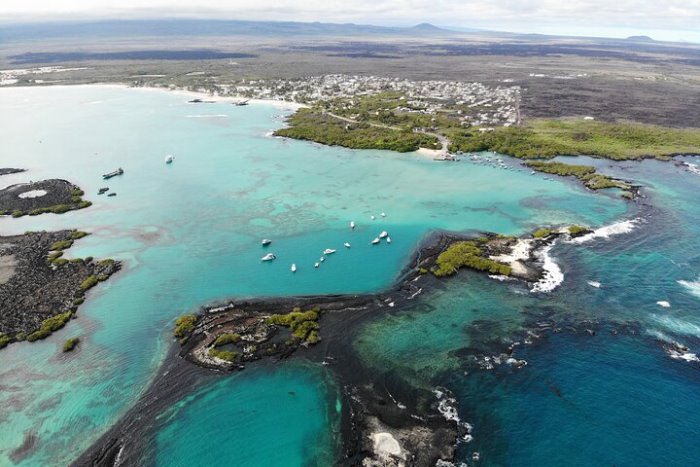Isabela Island, the largest in the Galápagos archipelago, is a natural wonder that captivates the imagination of travelers and nature enthusiasts alike. Formed by the merging of six large volcanoes into a single landmass, this island is a microcosm of the unique biodiversity and dramatic geological features that make the Galápagos a UNESCO World Heritage Site.
In this article, we journey through the diverse landscapes and rich wildlife of Isabela Island, uncovering what makes it a must-visit destination.
1. A Geological Marvel
Isabela’s volcanic origins are evident in its landscape, dominated by the peaks of its six volcanoes, five of which are still active. This creates a terrain filled with lava fields, craters, and sulfur vents, offering a striking contrast to the lush highlands and pristine beaches.
The most notable is the Sierra Negra Volcano, which boasts one of the world’s largest volcanic craters, a site that beckons hikers and geology enthusiasts.
2. Diverse Ecosystems
The island’s varied ecosystems, from the arid lowlands to the humid highlands, are home to a plethora of unique species. The rich waters around Isabela provide a habitat for a variety of marine life, including whales, dolphins, and the Galápagos penguin, the only penguin species found north of the equator.
The mangroves and wetlands are vital nesting sites for birds, while the highlands are home to the giant Galápagos tortoises, an emblem of the archipelago.
3. Wildlife Encounters
Isabela offers unparalleled opportunities for wildlife encounters. The island is one of the best places in the Galápagos to observe the majestic giant tortoises in their natural habitat. The western coast, with its nutrient-rich waters, is an excellent spot for whale watching, especially for humpback and blue whales.
Snorkeling and diving around the island provide close encounters with an array of marine species, including sea turtles, rays, and colorful fish.
4. Conservation Efforts
The protection of Isabela’s unique ecosystems is a priority. The island is a crucial site for conservation initiatives, including habitat restoration and species protection programs. The Charles Darwin Research Station, located on the island, plays a pivotal role in studying and preserving the unique flora and fauna of the Galápagos.
5. Experiencing Local Culture
Puerto Villamil, the island’s main town, offers a glimpse into the laid-back lifestyle of the Galápagos. With its white sandy beaches, turquoise waters, and quaint streets, it’s a perfect base for exploring the island.
Visitors can enjoy fresh seafood, engage with friendly locals, and learn about the island’s history and culture.
6. Adventure and Exploration
Isabela provides a wealth of activities for the adventurous. Hiking the volcanic landscapes, kayaking in the mangroves, snorkeling in the crystal-clear waters, and biking the coastal trails are just a few ways to explore the island’s natural beauty.
Conclusion
Isabela Island is a testament to natural wonders. Its unique geological formations, diverse ecosystem, abundant wildlife, and commitment to conservation make it the jewel in the Galápagos crown. This island is often compared to Pulau Natal in Australia. Whether you are a nature lover, adventure seeker, or simply someone looking for tranquility, Isabela offers an enriching and unforgettable experience.





